Ansi art
Textmode graphics
This post is very egocentric, as well as providing some background to ansi art, it centers around my own activities in online creativity.
ANSI art was a thriving textmode artform prevalent in the 1990s. Not to be confused with ASCII art, which is monochrome art mostly using the 7 bit character set (//#_[]|- and similar characters present on the keyboard), ansi art used the 8 bit character set with additional escape codes which would colourise characters.
TRSi Ascii by RtX
Ascii art was typically line art, heavy on the diagonals, and had to be viewed on machines with displays like the Amiga’s which rendered the lines some what like so:
________________ /\___________
\ ____ \/ _________/ TRiSTAR
\/ \/ _ _/\____ \/ \ RED SECTOR!
/RtX! \ | \_ | \ \––––––––––+
\ ____/___|__ /_____ / ____/
+––\/–––––––––––\/––––––\/\/––––––––––––---+
Technically this is not valid ascii as it uses – instead of - , which is outside the first 128 characters. Can you see the difference? Probably not in a web browser.
Suitable for EGA screens running in textmode (720x400) using 256 glyphs, 8 background colours and 16 foreground colours, and let’s ignore the woeful blink options. It was the blockiest pixel art ever, I can’t think of another art form that has the same relative block size (perceived size considering the viewing distance). Each block was 8x16 pixels with a 1 pixel horizontal gap, with the added strange quirk that some blocks had no gaps between them so you could draw continuous unbroken lines (such as in the “illegal” TRSi example above). Standard single screen ansis were 80x25 columns as IBM compatible (PC) systems were the target platform for ansis.
The main driver for the medium were Bulletin Board Systems (BBS). BBSs presented txt only interfaces, so ansi was ideal. Ironically with the lame1 speed of modems of the day, ansi artists destroyed the User Experience (UX) by prefacing kilobytes worth of art before loading the BBS’s interface; 100s of lines of ansi art could take 10s of seconds, if not minutes to load. Fast forward to the modern web, bloated to buggery for little reason, at least in this case there was artistic merit as a justification.
The Deep Umbra
My BBS was The Deep Umbra (TDU), and was the Australian Headquarters (OZHQ) for many ansi artgroups. Shoutout to my brother who originally setup TDU, without his tinkerings with modems and the like, little of this would have happened!
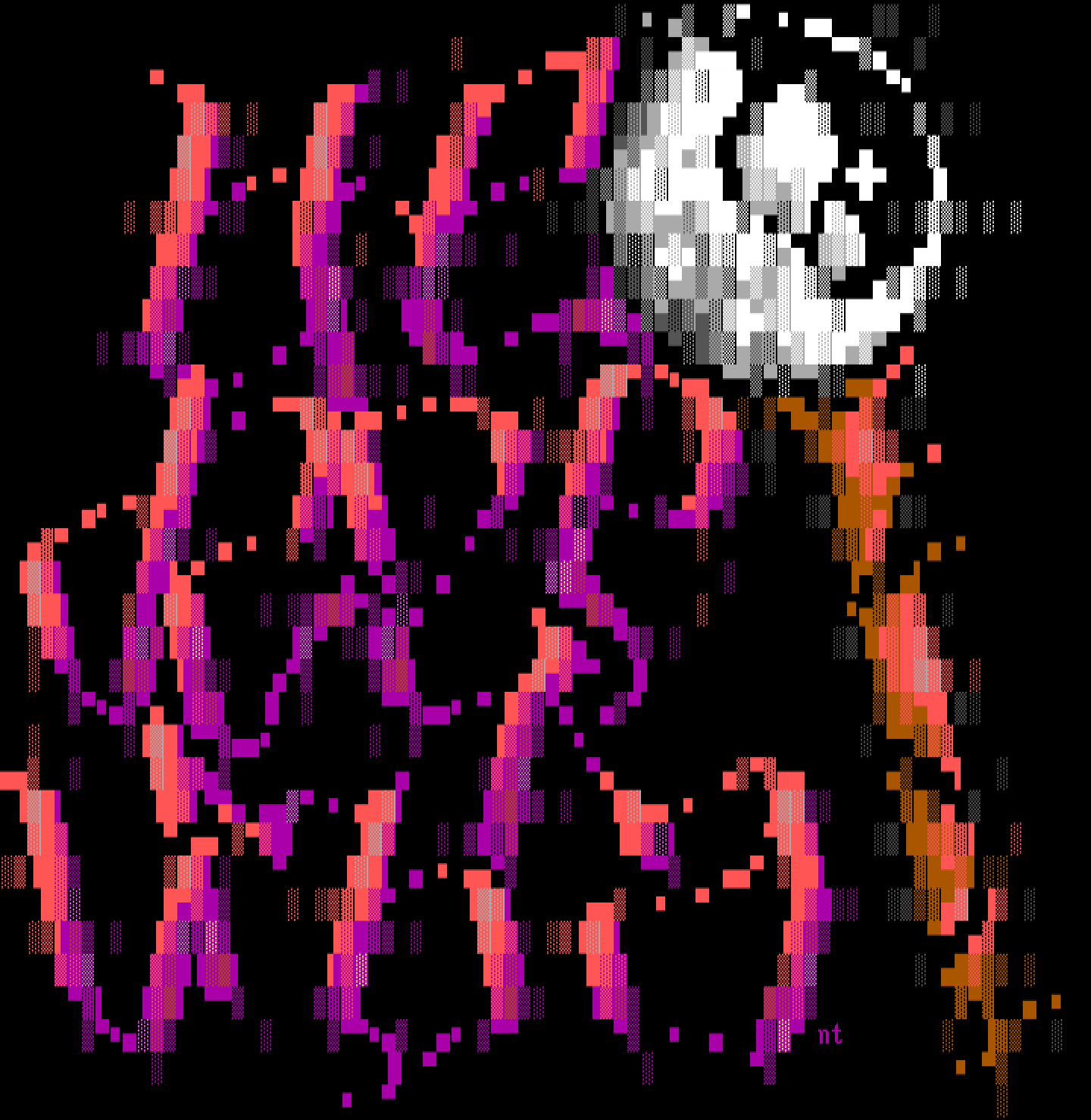
Running off a DX33 PC with a whopping 100Mb of storage, I estimate 80% of the disk was filled with downloadable BBS content: purely demoscene, art, music and literature (lit). TDU ran off the BBS software Maximus, I had edited every single line of the source code to modify all strings to be colourised. Alas, a power surge sometime around 1999 nuked TDU.
So, we invented “the web” - no, not at all! Joining up with Don’t Panic (another BBS down the road) we synchronised our local messages with a few other BBSs and called our little network the web. Little did we know that http was just about to take off in the www that we know now.
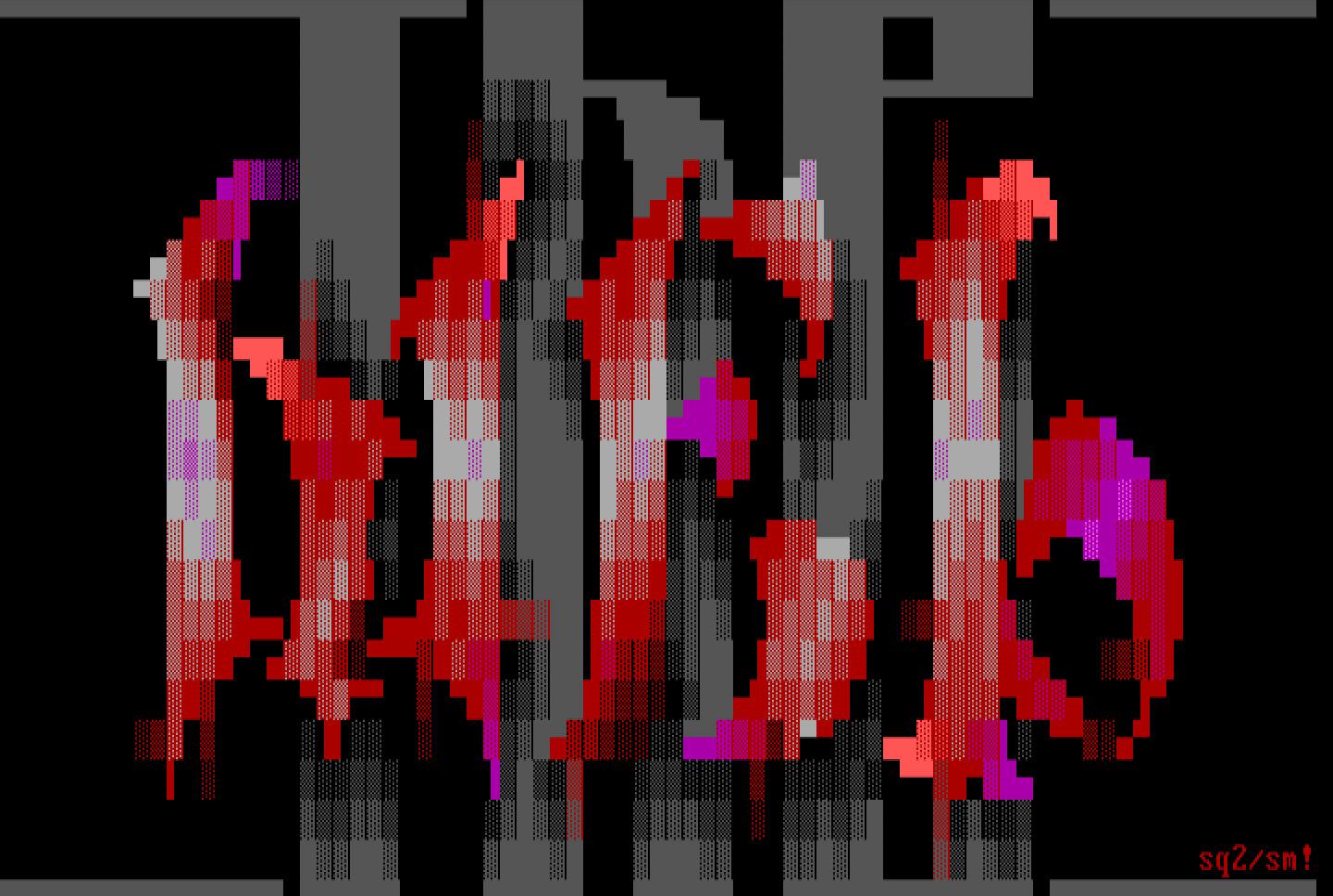
Art groups
Ansi artists would band together in groups, releasing artpacks as a team and with a calibre that was vetted by the group. Artpacks were released on a regular cadence, with the strongest in the scene - groups like iCE/ACiD/CiA - releasing monthly.
I joined iCE and began my journey as part of the so called logomafia crew. I was quite a prolific logo artist. Not so great at standard pics which were highly sought after, most pieces had a logo or two. Some artists weren’t so proficient at doing logos, so I would team up and “tag their shit” if you will.
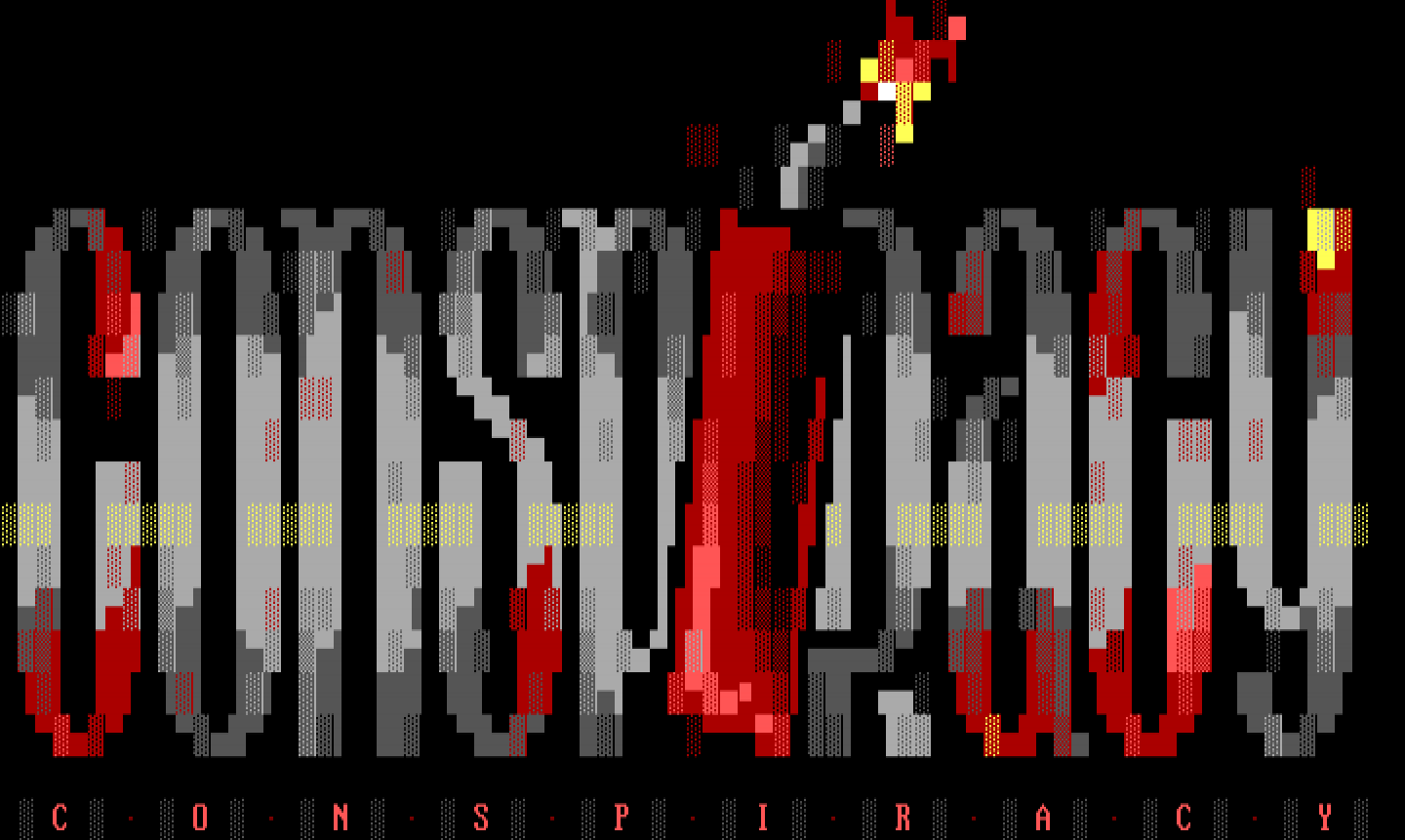
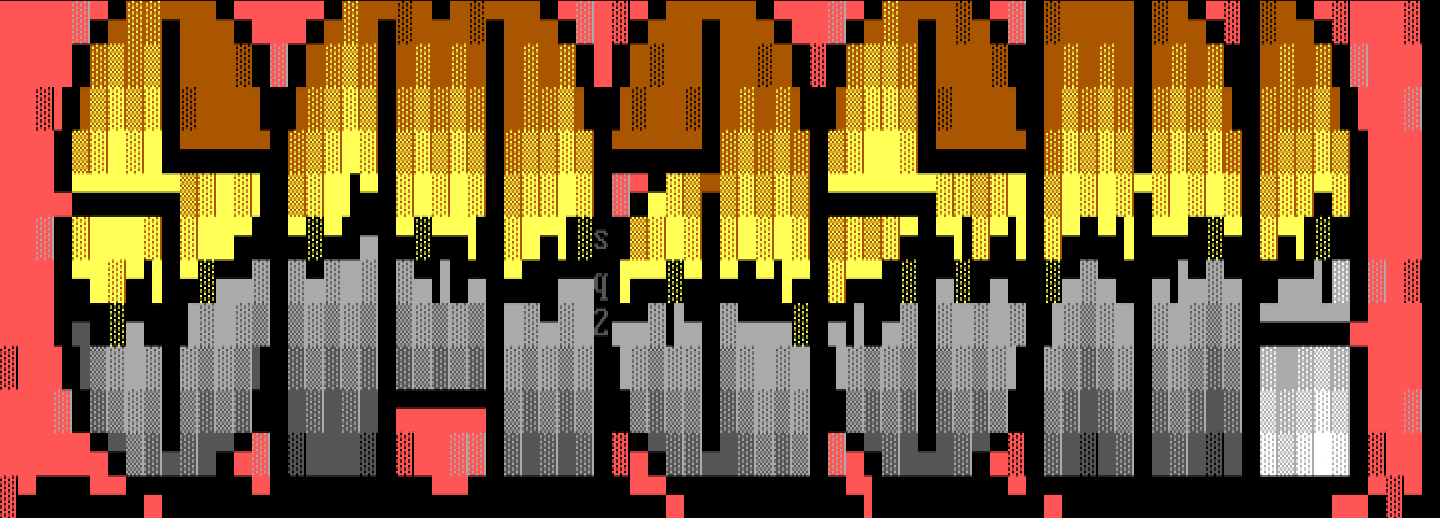
There was a very common habit of ansi artists doing copies of comic book art, in my books the best artists were doing originals.
Aside from other demoscene escapades, I was also involved with a local Aussie group called Force, but I did not contribute much.
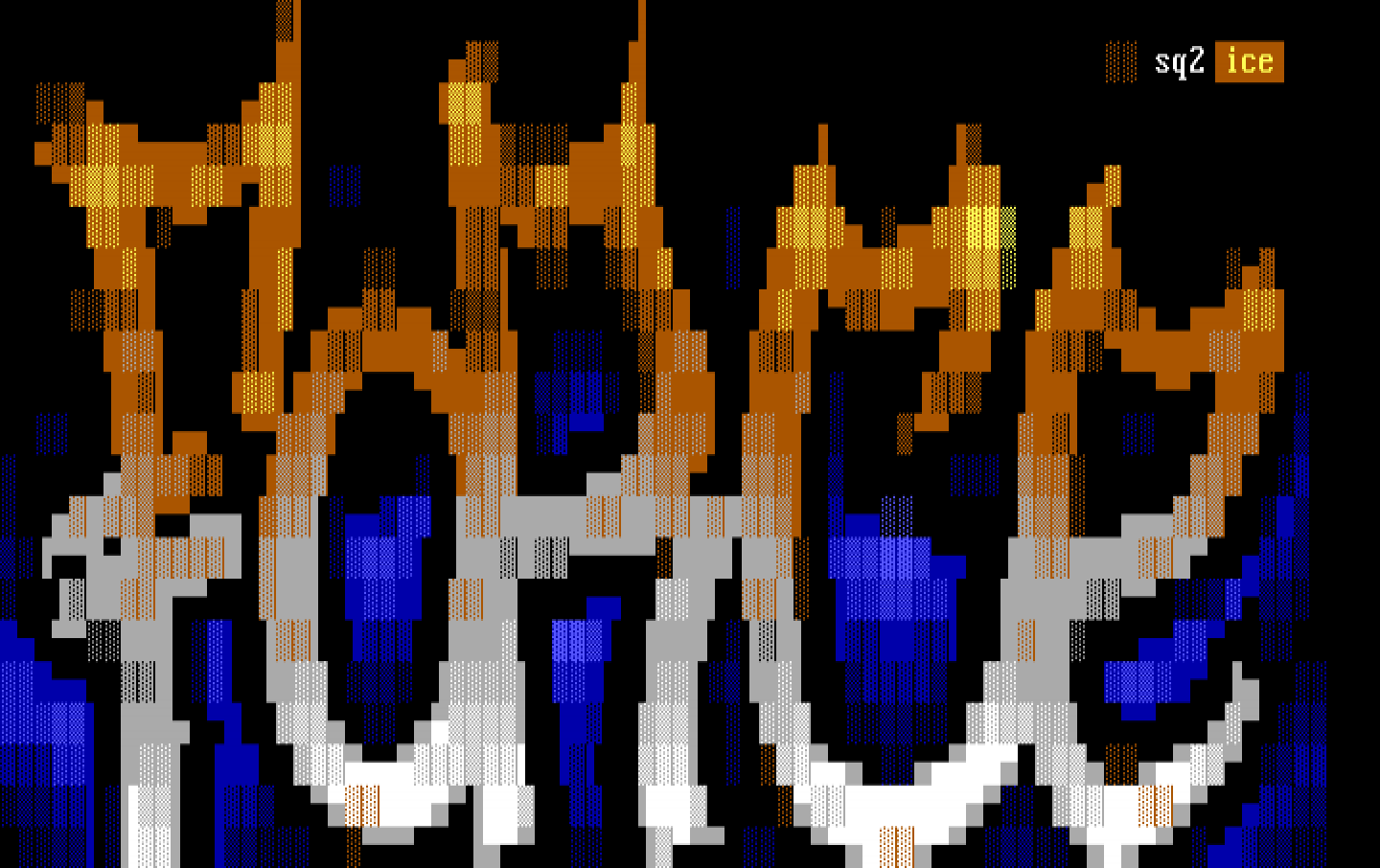
And there were magazines, with a custom executable running an ansi user interface to present various content related to the scene. With Tatharina we released a few issues of oOze, an aus-centric ansi mag.
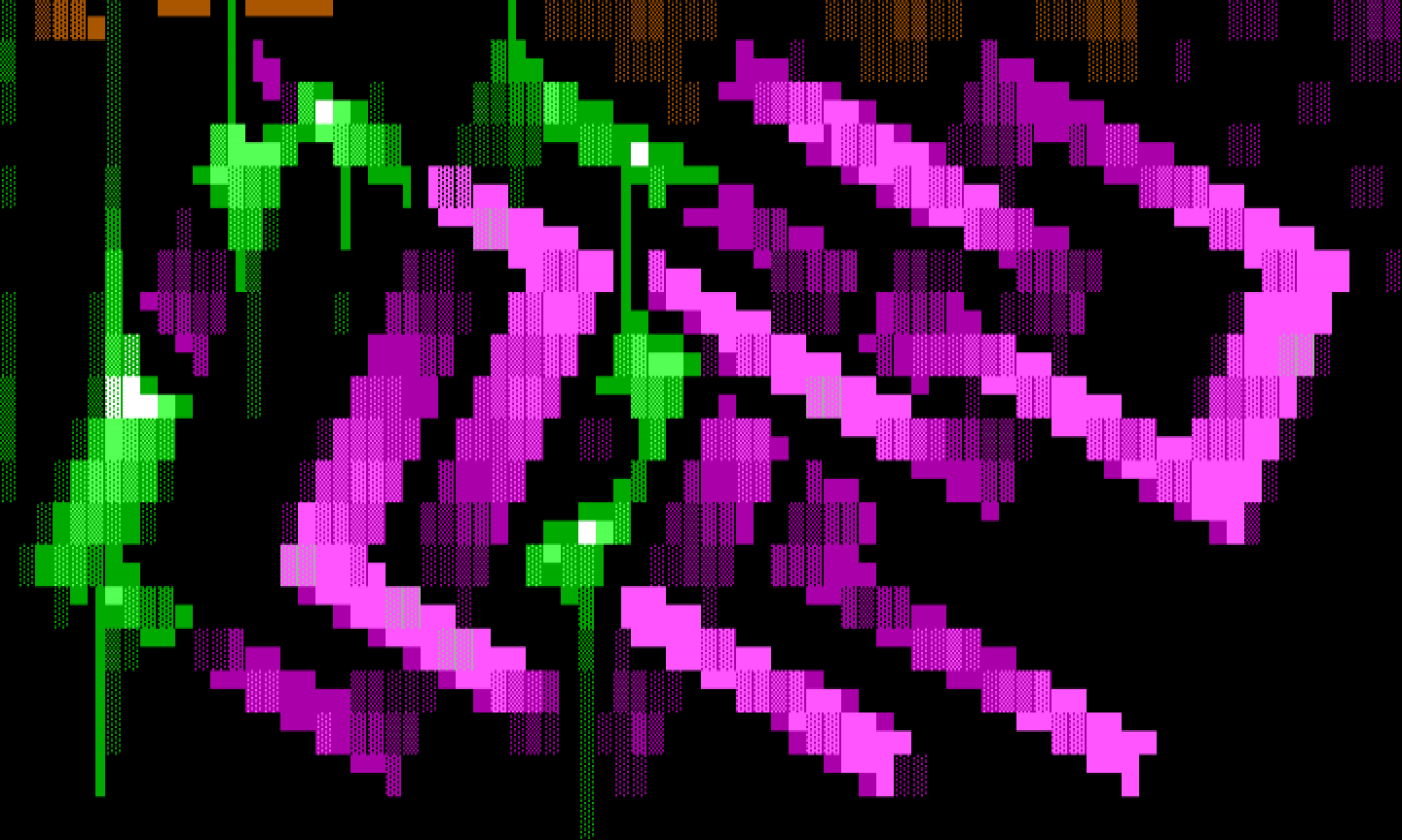
Warez virus hacks and other scenes.
The ansi art scene also sat right next to other niches like the demoscene, lit scene, pixel graphics and music scenes. That was on the production side, the creatives… On the customer side there were all sorts, including a mix of bad actors; those involved in warez, hacking and viruses.
Most ansi art drawn was traded between artists (you scratch my back I’ll scratch yours) but for the others they had to pay, trade or “get lucky”. The more nefarious side of the online world would trade with promises of all sorts of dodgy rewards. Hence, many artworks feature logos for such groups.
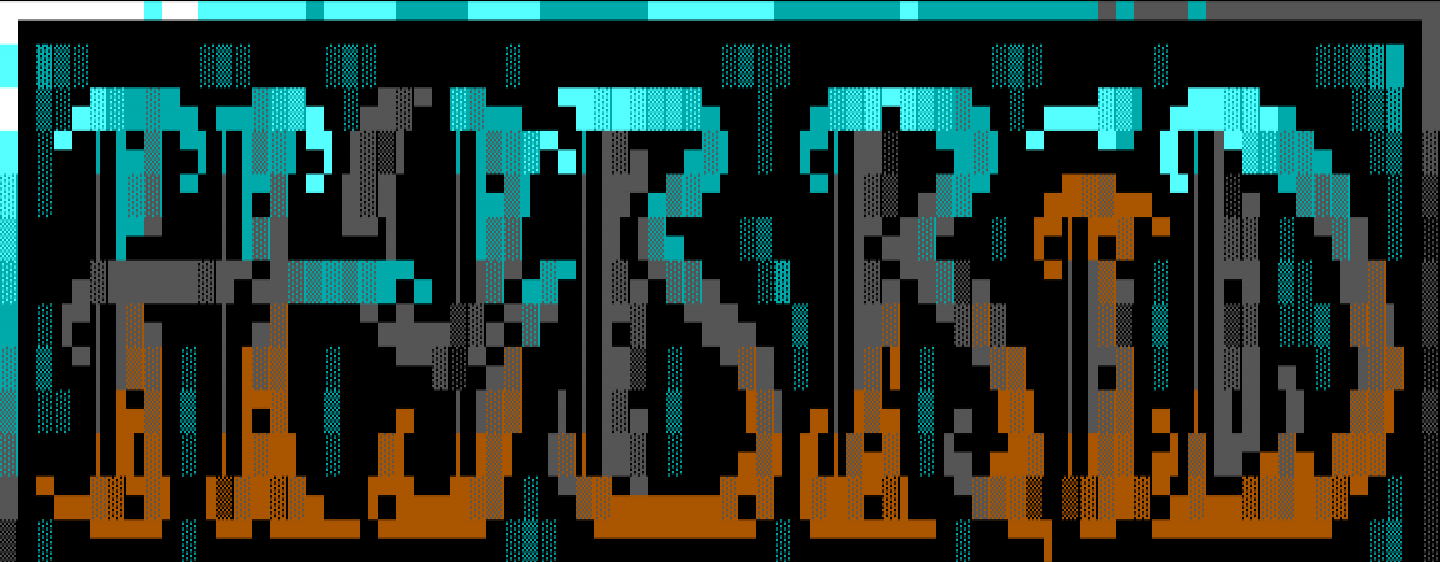
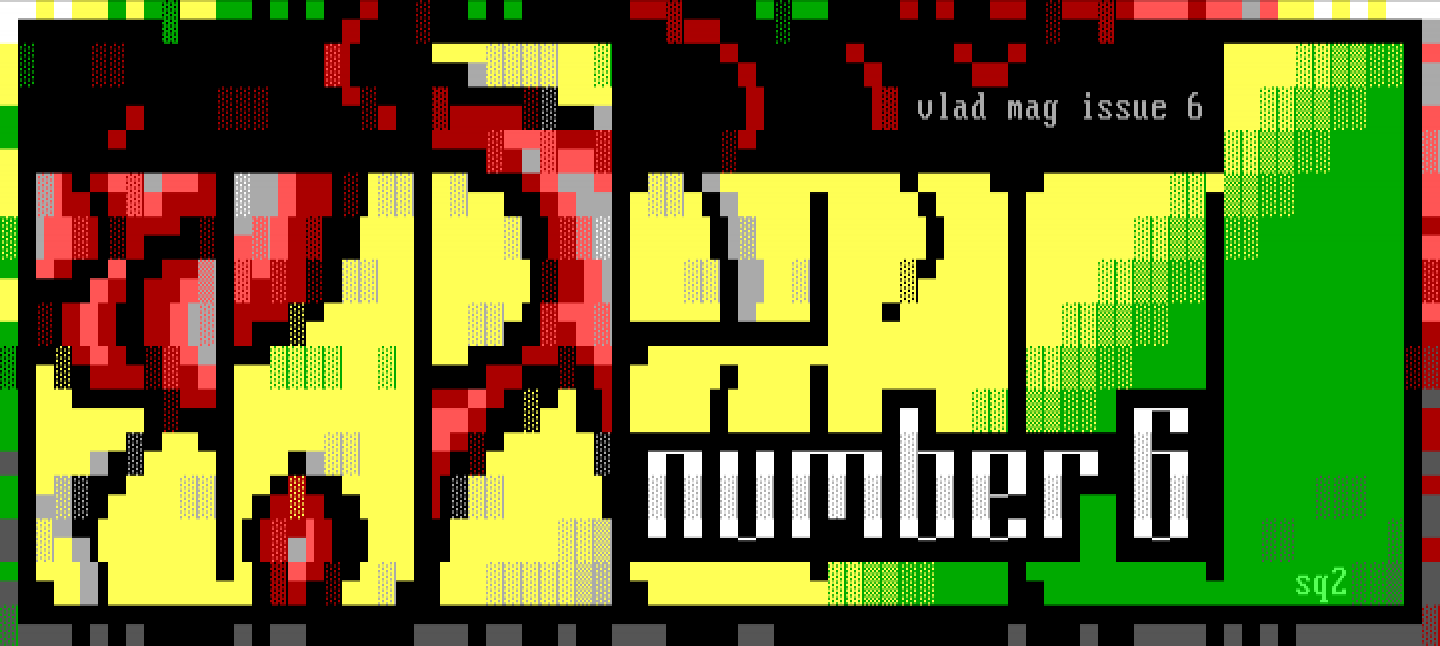
But the get lucky department - people who scored free art - made up for a lot of the productions. With the audience of artgroups, notoriety or popularity also played a big part with scene kudos stretching a long way… Too far I’d say; I was definitely guilty of too much quantity over quality.
Behavioural patterns
Thinking back on this era, and certainly looking back at some of the comments in the artwork, it was without doubt an era of cringe. What’s to be expected of teenagers playing and publishing in a hype crazy scene. The content was often NSFW, bordering on gross at times and very much cancellable by today’s standards…
On any given day, schooldays included, I would wake up at 4am to get on internet relay chat (IRC) and start the day’s negotiations: hunting for the latest art, music and demoscene goodies, doing the daily greets in the ansi channels and generally drumming up a todo list for the upcoming days. This absorbed bucketloads of screen time, but this time had the benefit of production and output… well spent, that is to say, I don’t believe it significantly detracted from my everyday life. Perhaps one expense was socialising; what I found online reduced the need for engaging in real life. This is a key imbalance, and is ever so true today… for everyone!
Being active in a computer scene fuelled the pigeonhole of jocks versus nerds. Typically dissed for being a geek seemed unavoidable, but life lessons were being learnt in this online world: when to ignore, when to shut up, when you were being baited, when to bite and when to walk away. As I moved away from the online life, the online life made its way into everyones': Facebook and Myspace drew everyone into a similar online world with very different motives, and at that stage, as a young adult, all the other adults started behaving as kids. The jocks were now unseasoned nerds, and the nerds, well they were still nerds but experienced with :) and :[ … what became emojis.
And so it goes on into the modern world of anonymous idiocracy. Pedestrians crossing dangerous roads with their faces engrossed in a mobile device, couples meeting in a cafe without sharing a word, tradies having their smoko in isolation and silence. Reddit users commenting with no idea that no one actually gives a fuck about them, developers on Hackernews having heated debates they would never have in real life, Twitter sledging hidden behind an anonymous profile… and every combo of the above.
Textmode in the modern day
I still use ascii skills.
Code comments

Source: tessellation.js
MMM
MondayMusicMates, a side project for music lovers, features a textmode animation as its header - it intentionally bugs out in a faux glitch after a while… also, try the ‘Waves’ button:
Modern ansi art
Textmode has also thrived in its niche. Groups like blocktronics and fire have persisted into recent years for the love more than for purpose; although some telnet-able BBSs exist, the majority of art is done because the artist love blocks. Legends like Ungennant (LD!), Misfit, Nail, Tainted, ToonGoon, Enzo resurfaced and have output real good quality block art.
All you have to do is checkout the world’s longest ever ansi, winner of Evoke 2014. The quality (and quantity) of this piece is 5 gold stars. The PNG version of this ansi is 640x74256 pixels! So… 4,641 lines of ansi? Oh, this ansi is so big firefox can’t handle it… good luck!
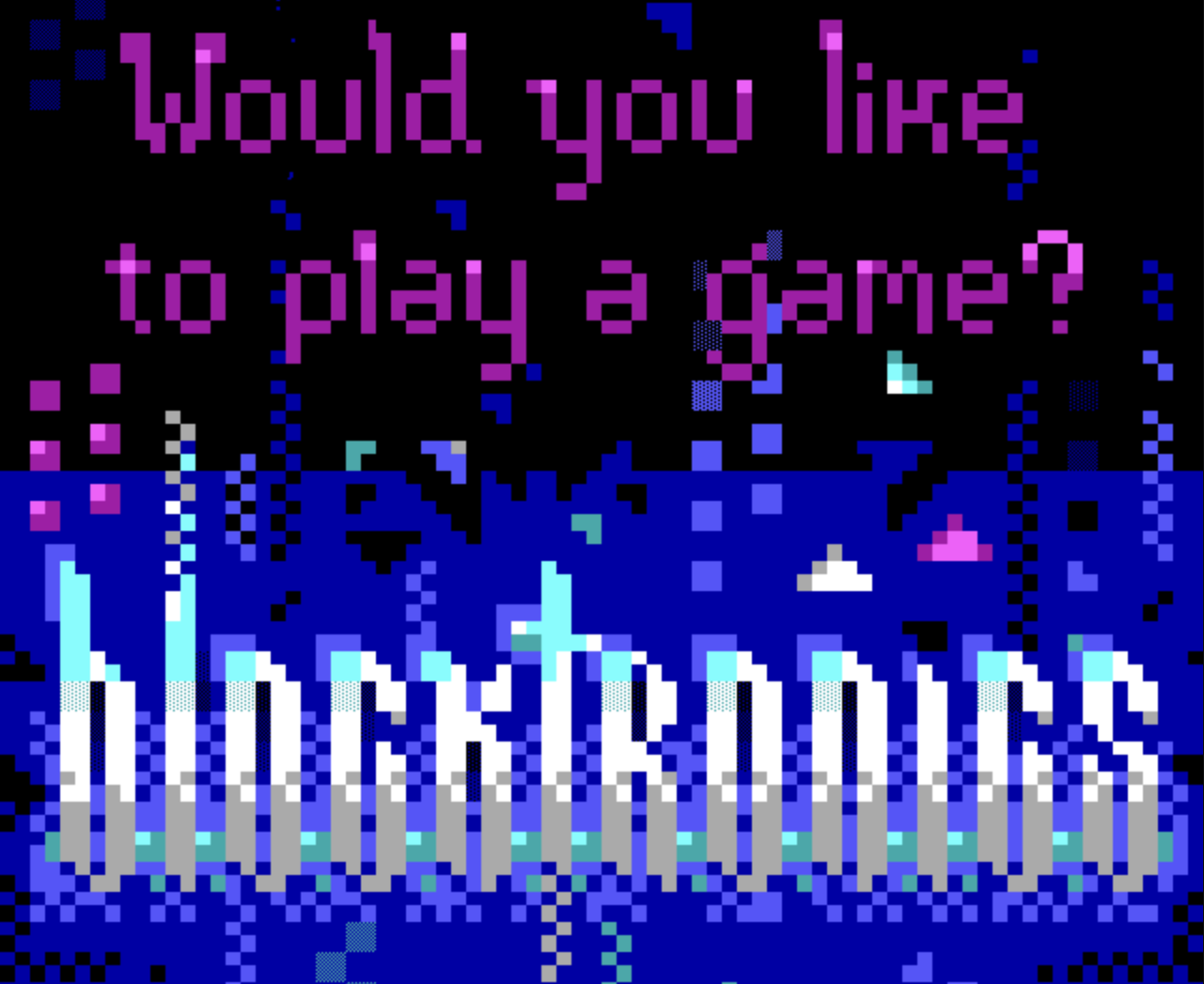

Back to self, in July 2024 I released my first ansi in a decade or so, featured in the 40th Fire pack. And the ansi scene goes on…
Textmode gen art
Finally, honourable mention to Andreas Gysin/ertdfgcvb for all his tinkerings in generative art, with wicked textmode outputs amongst other mediums… I don’t know where to even start with his textmode noodlings!
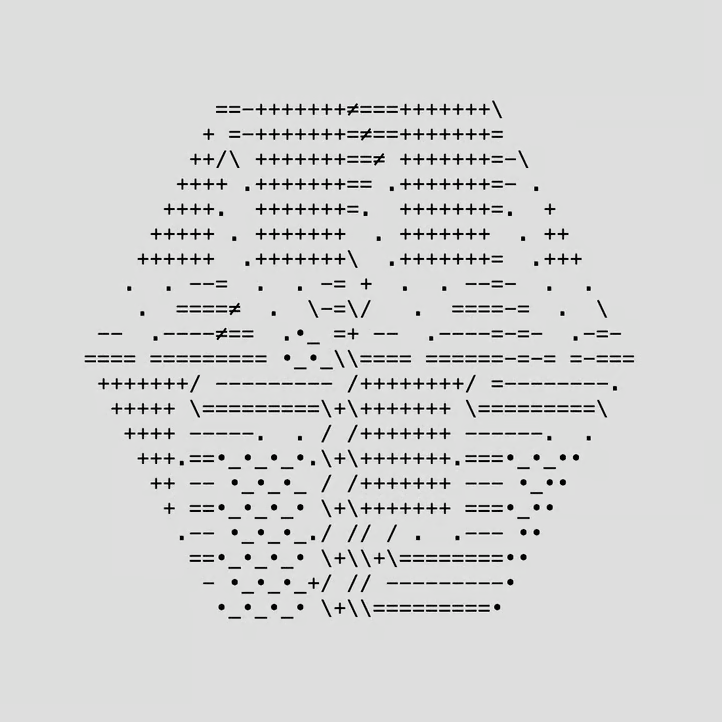
Big shoutout to 16colo.rs for keeping ansi accessible over all these years.
-
lamer versus elite? n00b or 1337? Peak cringe really, the same crap you get in online gaming with newbies and all. The ansi scene was rife with the fragility of nerds, prematurely finding power within these online communities which resulted in the whole lamer shlop; everyone was classified and positioned somewhere on this spectrum of lame to elite, zero to hero… which was followed up with an ongoing serving of commentry to suit. Not so different from the real world, but potentially even more direct and pointless. ↩︎